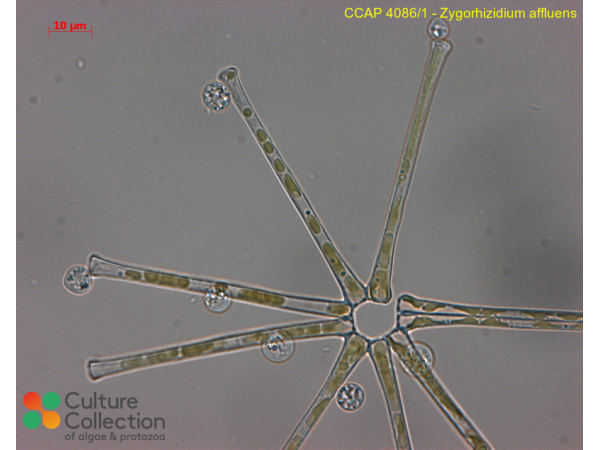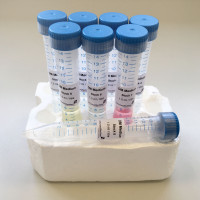(Bold text = submission by CCAP staff or collaborators)
Note: for strains where we have DNA barcodes we can be reasonably confident of identity, however for those not yet sequenced we rely on morphology
and the original identification, usually made by the depositor. Although CCAP makes every effort to ensure the correct taxonomic identity of strains, we cannot guarantee
that a strain is correctly identified at the species, genus or class levels. On this basis users are responsible for confirming the identity of the strain(s) they receive
from us on arrival before starting experiments.
For strain taxonomy we generally use AlgaeBase for algae and
Adl et al. (2019) for protists.
| Attributes | |
| Authority | Canter 1969 |
| Isolator | Rad Menéndez & Gerphagnon (2014) |
| Collection Site | Pavin Lake, France |
| Archive Date | 2022-06-23 09:47:26 |
| Archive Reason | Other |
| Notes | In co-culture with host organism, CCAP 1005/23 Asterionella formosa. |
| Axenicity Status | Bacteria present |
| Area | Europe |
| Country | France |
| Environment | Freshwater |
| In Scope of Nagoya Protocol | No |
| Collection Date | March - April 2013 |
| Original Designation | AST3 |
| Pathogen | Not pathogenic: Hazard Class 1 |
| Toxin Producer | Not Toxic / No Data |
| Type Culture | No |
CCAP 4086/1
Zygorhizidium affluens
- Product Code: CCAP 4086/1
- Availability: Archived
Related Products
CCAP FADM-C
Diatom Medium (DM)
CONCENTRATED STOCKS
Non-sterile concentrated stocks to make up 5 litres of DM medium. Diatom Medium is used for culturi
CCAP FADM-P
Diatom Medium (DM)
1 LITRE PREMADE
1 litre of sterile, ready to use, DM medium. Diatom Medium is used for culturing freshwater diatoms




